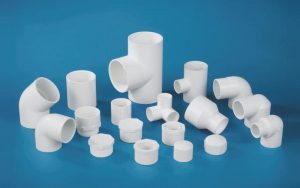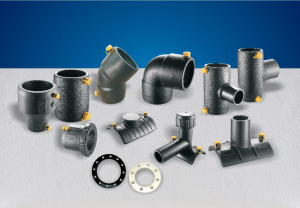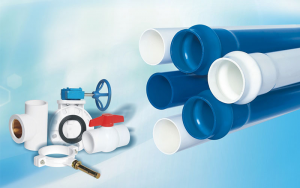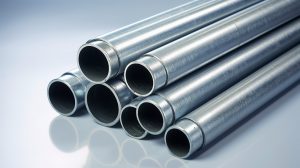Table of Contents
I. Introduction to Siphonic Drainage Systems
Many of us have never heard of siphonic drain systems, but as of 2023, they’ve been around for 55 years. Two Finnish engineers designed the first system in 1968. It was a radical concept then, this idea of pulling only water off of the roof and filling the pipes to their full extent.
In reality, this system is much more efficient than traditional downspouts because the water is drawn instead of relying solely on gravity. That means that it will clear the water off of the roofs in question much more quickly than standard drains will while using smaller pipes.
II. How Do Siphonic Drainage Systems Work?
Siphonic drains use a rainwater drainage system that is powered by a vacuum. The design is ingenious because it needs no outside power to function. The idea is for one system to connect to several water collection zones. Unlike the aforementioned standard drains that rely only on gravity, siphonic drainage systems use gravity as a tool to jumpstart the vacuum that draws the water off of the roof and into the drains.
A properly maintained antivortex plate will keep leaves and other detritus out of the system. That same plate also breaks up the Coriolis effect, which allows the water to push itself straight down into the antivortex plate, creating the vacuum that sucks the water off of the roof faster than gravity alone. In many cases, siphonic drainage systems operate as regular drains when the rainfall doesn’t reach a certain level, which is generally about 2 inches per hour.
III. Advantages of Siphonic Drainage Systems
Because of the vacuum created by the antivortex plate, the sucking power produced eliminates the need for pitched pipes and/or gradients that traditional systems require. As an example, with standard drains, a rainfall rate of 4.3 inches per hour on a 7,000-square-foot roof would necessitate a 5-inch downpipe and a 6-inch horizontal pipe sloped at 1/4 inch per foot.
Conversely, a single siphonic pipe would only need to be 4 inches wide in the same situation. No horizontal pitched pipe would be necessary.
Also, because they can operate on completely flat roofs common on commercial buildings when installed in combination with each other, they are useful on very large roofs. Such roofs would include those in shopping centers, big storage warehouses, and apartment or condominium complexes that are wide rather than tall. In between periods of regular maintenance, they’re also self-sustaining.
The No. 1 benefit of these systems is that they cost half as much as traditional drains. They’re both more flexible in design and easier to install, so most of the savings are in labor costs. The chief reason for these advantages is that a single pipe will suffice, and the pipe can be flat.
IV. Siphonic System Design and Installation Considerations
The first thing to remember is that these systems are not for your home unless you have a palatial mansion with a roof of 10,000 square feet or more. They’re for commercial and industrial buildings. Second, while it is true that siphonic systems only need one pipe to function in any one area of the roof, you still have to have enough pipes to handle the maximum flow that can occur.
The bigger the roof, the more systems you will need to drain the roof effectively. Remember, the individual systems will all drain into a larger central system that will either store the water for some purpose or shunt it away to safety, generally to a sewer or, if allowed by law, directly into a river or lake.
The different drains of the full roof system must be aligned so that the pipes can be constructed at right angles to one another. If they’re out of alignment, then you would need to create pitches for the water to flow correctly, which defeats the purpose of the siphonic drainage system in the first place. Once aligned, the full advantage of such a drainage system becomes apparent.
The ability to lay the pipes flat between different systems means that you can run them through the ceiling instead of needing to do time-consuming and expensive digging, which might include excavating under the slab as well. Remember to use pipes that can handle water that flows at 100 times the rate of gravity.

V. Conclusion
At LESSO, we know what’s what regarding siphonic drainage systems. We’ll work with you whether you’re installing a new set of roof drainage pipes in an old building or building new. Either way, we’ve got the experience and know-how to do the job right the first time. Contact us today to set up an appointment to get things started.
FAQs about Siphonic Systems Suitable
Siphonic systems typically have a smaller pipe diameter yet achieve greater flow compared to traditional gravity flow systems of the same diameter.
Recommend Reading

What’s the Difference Between PVC Pipe and PVC Conduit
Table of Contents PVC or Polyvinyl Chloride pipes use vinyl and plastic materials. We use these pipes in plumbing systems. If you do not want

What are the Different Types of PVC Fittings?
Table of Contents Pipe fittings connect the pipes together and allow you to customize your plumbing to suit your needs. There are lots of different








